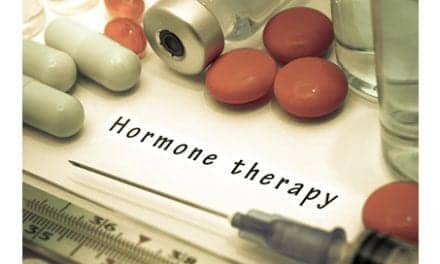Both high-intensity and low-intensity rehabilitation protocols are effective in improving strength and function in patients after undergoing a total knee arthroplasty (TKA), a recent study suggests.
The study, which appeared in Arthritis Care & Research, included 162 patients between the ages of 50 and 85 who were scheduled to undergo a primary, unilateral TKA secondary to knee osteoarthritis.
Among these, 84 received high-intensity (HI) intervention, and 78 patients received low-intensity (LI) intervention, that began 4 days after the TKA procedure.
The HI intervention was a progression-focused rehabilitation program that included a warm-up; progressive resistance exercise (PRE) that targeted the ankle plantar flexors, quadriceps, hamstrings, and hip abductors adductors, extensors, and flexors; bilateral and unilateral weight-bearing exercises; balance exercises; agility exercises; and activity prescription.
The LI intervention was a time-focused rehabilitation program synthesized from published rehabilitation programs, chart reviews, therapist observation, and interviews with treating therapists, states a media release posted on Healio.
Significant differences from the HI program were an early emphasis on isometric and range of motion (ROM) exercise for the first 4 weeks, a slower conversion to weight-bearing exercises, less progression in exercise difficulty, no resistance other than body weight or elastic bands, and limited activity outside of daily life for the first 4 weeks.
In both groups, patients had 26 outpatient treatment sessions, two- to 3-times per week, for 11 weeks. The primary outcome was the time needed to climb and descend a flight of 12 stairs as assessed by the stair-climbing test (SCT) at 3 months.
The researchers found that in the SCT, no significant differences were seen between groups in the change from baseline to 3 months. Moreover, no difference was seen between groups in terms of SCT performance at any of the assessed time points during the 12-month follow-up. In both groups, patients regained baseline SCT performance by 2 months. By the 12-month time point, SCT performance exceeded that of baseline by 5.42 seconds in the HI group and by 4.36 seconds in the LI group, the release explains.
The HI and LI groups demonstrated no significant differences at 3 months or 12 months in SCT, timed-up-and-go (TUG) test, 6-minute walk (6MW) test WOMAC scores, knee ROM, quadriceps and hamstrings strength, quadriceps activation or the rates of adverse events. By 12 months, outcomes had improved beyond baseline performance for the 6MW, TUG, WOMAC, SF-12, quadriceps, hamstring strength and quadriceps activation for both groups, the release continues.
“The HI intervention was safe to use, but it did not lead to superior outcomes compared to the LI intervention,” the researchers write. “The effectiveness of the HI intervention may have been limited by arthrogenic inhibition. Both the HI and LI interventions led to improved strength and performance in the long term.”
[Source: Healio Rheumatology]





